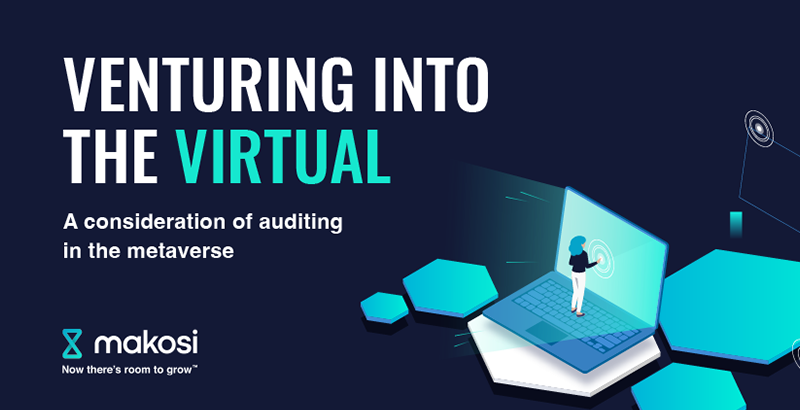Everyone’s talking about the hybrid workforce, where employees predominantly work from home and take trips to the office if and when needed. Most firms already have this model because Covid-19 forced companies to consider this solution.
Granted, there wasn’t much time to prepare for hybrid digital transformation, but the speed of adoption has nudged firms to envision their ideal virtual environment and how they can adapt to the future.
In short, we’re currently operating in a future that we thought would only happen in 5 to 10 years, which means every other technological and virtual future is also fast-forwarding. Enter the metaverse, where employees may walk through a door that doesn’t really exist, converse directly with colleagues via avatars, and sit at a non-existent boardroom table for an avatar-to-avatar meeting.
Where we are, or should be, today
The hybrid working model has transformed from a pre-Covid-19 luxury to a post-pandemic necessity. As such, firms that haven’t fully transformed need to rapidly identify, evaluate, and assess:
- Innovations still required;
- How to ‘future-proof’ their working environment; and
- The critical skills required to thrive in the changing virtual arena.
What should the current virtual environment look like?
- Hybrid: A mix of virtual and on-site interactions with clients
- Digital: Innovations that allow automated tasks and flexibility for both employees and clients
- Constant brainstorming: Engagement with stakeholders to formulate workable solutions and technologies
- Technological upskilling: Teams need training to adapt
- Soft skills training: To retain the all-important human element of working with clients, colleagues, and management
The numbers speak for themselves
McKinsey:
The finance and insurance sector has a 76-86% chance of achieving a remote working environment without losing productivity.
The Economic Times:
82% of employees prefer working from home. 67% of companies struggle to hire talent in an office-only working environment. 64% of employees feel more productive and less stressed working from home.
Lucas James Talent on variable workforces:
A variable workforce keeps overheads low and variability high during busy seasons, offers flexibility to match talent with demand without adding employee tax and benefits, and gives more access to a diversity of top talent.
BUT, this is only the environment we should be in. The not-so-distant future is already advancing further…
The meta future of auditing
The metaverse is an online space combining all aspects of life into one virtual reality. In other words, while you and your colleagues work from home, you can enter a 3D office and interact with your colleagues’ avatars.
Facebook/Meta has also recently announced its plan to create a unified metaverse to support work and financial opportunities, like blockchain technology.
In addition to collaborating with colleagues globally, auditing firms can use the digital economy (blockchain) to launch businesses and serve clients trading in the metaverse.
This may sound like a sci-fi film, but it’s becoming more evident that this could be the future of remote working. Fortunately, predictions indicate that this transformation will take a little while longer and, unlike the past two years, businesses still have time to prepare for it.
So where to from here?
If the public accounting industry wants to prepare for this big leap into the virtual world, it must align with current technology and have the willingness to adopt innovations.
Why? Because organizations and their leadership styles differ, and each firm reacts differently to the changing environment. That is why it’s crucial to assess and identify the possibilities with an open mind, to ensure your firm is culturally and technologically ready.
What’s more, by implementing new models and policies now, your firm can familiarize itself with virtual workspaces, create room to grow, and avoid being blindsided when the change comes.
The result?
- Reduced travel costs for clients
- Reduced travel and office space overhead costs for employers and employees
- Reduced travel time and increased employee productivity and wellness
- A flexible working environment that attracts and retains top talent
- An overhead impact on your firm’s ESG strategy and score
- The ability to have a contingent workforce and on-demand talent
- Reduced recruitment costs and time spent on employee management
Don’t be overwhelmed; be over-prepared
Many businesses freeze up at the thought of another digital transformation, so soon after the pandemic’s demanding push into remote working, but that is precisely why planning for the future is so important.
We’ve also learned the lesson that the future can fast-forward in a matter of months and that being over-prepared is better than being overwhelmed.
Here’s how you can prepare for the next digital venture:
- Stay informed
Keep familiarizing yourself with industry and technological changes while educating yourself and your firm about the virtual world and its benefits. As a result, your employees can anticipate change and welcome it.
- Identify, discuss, and solve
Involve your workforce in reflecting on the effects of the pandemic on the company and working environment. They have worked through the challenges and are your best assets in identifying challenges, discussing impacts, and developing smart solutions.
Never exclude your clients from transformation. Understanding their needs and vision will help you develop strategies to serve them using virtual interactions in the coming metaverse transformation.
- Keep listening to employees
Communicate with your employees about how they feel about flexibility, the work-life balance, and joining you in this virtual journey. This will inspire them to help build the firm and its core values while developing workable solutions.
- Upskill, and then upskill again
Support your workforce with the resources and training they need to adapt and thrive in the new digital age. Their skills will need to change from merely auditing to understanding automation, programming, and blockchain technologies.
What’s more, they’ll need support from leadership to foster soft skills like building relationships, connections, and trust with clients and stakeholders.
- Don’t forget the personal touch
As the world enters this new virtual phase, we can’t neglect the core values, empathy, and kindness connecting the firm, its employees, and clients. Interactions may become more virtual, but this only stresses the importance of remaining ‘human’.
Into the metaverse we go
Many firms are still trying to adapt to the hybrid environment, and although the virtual world is currently in the future, constant growth can only make us more resilient for the future. If we stay in the know and continue communicating with clients and employees, we can work to remain at the forefront of innovation…and best practice.







